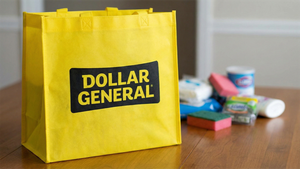
As the second half of the year has gotten underway, the healthcare sector, represented by the XLV ETF, has seen a notable resurgence. This sector, which had been underperforming since the pandemic, is now breaking out of a multi-year consolidation phase. In July alone, the XLV ETF surged almost 3%, while the overall market, as represented by the SPY, declined by 0.2%. This rotation of capital into healthcare highlights a renewed interest in the sector, which has primarily lagged in recent years.
What is the XLV?
The Health Care Select Sector SPDR Fund (NYSE: XLV) closely tracks the returns and characteristics of the S&P Health Care Select Sector Index. This index includes companies from various industries, such as pharmaceuticals, healthcare providers and services, healthcare equipment and supplies, biotechnology, life sciences tools and services, and healthcare technology.
The fund has a significant exposure to the U.S. market, with 97.5% of its holdings based there. The industry breakdown consists primarily of 47% in biotechnology, 28% in healthcare equipment and supplies, and 20% in healthcare providers and services. The XLV holds companies with an aggregate rating of Moderate Buy, based on 753 analyst ratings over the past year, covering 50 companies. The consensus price target for XLV is $162.34, indicating a potential upside of 8.25%.
A Look Back: Two Years of Sluggish Performance
For the past two years, the healthcare sector struggled to gain traction, with the XLV ETF trading in a consolidation range between $120 and $140. This lack of momentum was stark, especially when compared to the robust performance of the tech sector. The underperformance can be attributed to several factors, including regulatory uncertainties, pressure on drug pricing, and a post-pandemic shift in investor focus away from healthcare. Additionally, the sector faced challenges from increased competition and slow growth in specific segments, such as pharmaceuticals.
Technical Analysis: Breaking Out of Consolidation
From a technical perspective, the healthcare sector has shown a significant shift in momentum. After two years of sideways movement, the XLV ETF has recently broken out above the $140 level, which had acted as a significant resistance. The ETF is now up 9.96% year-to-date, approaching double-digit gains and trading within 1% of its all-time highs. The recent price action, including turning the previous resistance level into support, confirms a strong uptrend. Moreover, net fund flows into the ETF have turned positive, with a 1.28% increase over the past month, signaling growing investor confidence and momentum in the sector.
2 Cheap Outperforming Healthcare Stocks
Pfizer's Recent Stock Performance and Potential Rebound
Pfizer Inc. (NYSE: PFE) has experienced a significant decline, falling over 50% from its pandemic highs. However, the stock recently crossed above its flattening 200-day SMA, signaling a potential bottom. PFE has surged 12.22% this month in the short term, breaking out of a long-term downtrend that began in early 2023. With a forward P/E of 11.31 and a generous dividend yield of 5.46%, Pfizer is an attractive option for value and income-focused investors. Despite a consensus Hold rating based on 13 analyst ratings, the stock has a consensus price target that suggests an additional 12.12% upside.
Pfizer recently achieved more U.S. FDA approvals than any other healthcare company and entered an aggressive 18-month launch period, introducing 19 new products or indications. Management sees significant opportunities, especially in oncology, aiming to have eight or more blockbuster cancer drugs on the market by 2030.
Johnson & Johnson's Potential Move Toward All-Time Highs
Johnson & Johnson (NYSE: JNJ), the third-largest holding in the XLV ETF with a 6.89% weighting, recently found strong support near the $140 level and has since bounced sharply. This month, the stock is up 9.4%, significantly outperforming the sector and the broader market.
Following a solid earnings report, JNJ has seen a rapid increase in value, indicated by a slightly elevated RSI, and is nearing significant resistance around $162. However, if the stock can consolidate near this resistance level and continue to show relative strength, a move toward all-time highs could be possible as the year progresses. In its most recent earnings report on July 17th, 2024, Johnson & Johnson reported an EPS of $2.82, beating the consensus estimate of $2.71 by $0.11. The company earned $22.45 billion in revenue for the quarter, exceeding analyst expectations of $22.33 billion and reflecting a 4.3% year-over-year increase.






